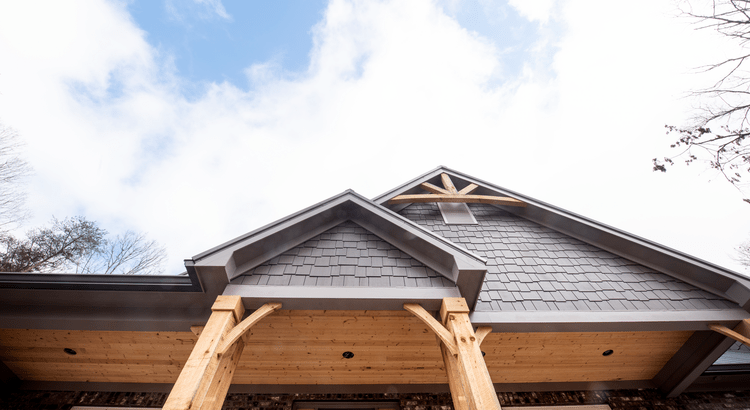The 7-step appraisal timeline for Minnesota homebuyers usually takes about 2-3 weeks. It kicks off when the lender orders an appraisal after you’ve signed the purchase agreement. A licensed appraiser is randomly picked and sets up a property visit. The on-site inspection lasts 1-3 hours, and the property’s condition, layout, and special features are assessed.
Next, the appraiser does a comparable sales analysis, looking at similar properties within a quarter to half-mile radius. Finally, they put together a report that summarizes their findings and determines your property’s value. This report is essential for lenders, buyers, and sellers alike.
Understanding each step can really help you navigate the appraisal process. If you’re looking for a trusted partner in your real estate journey, consider TheMLSonline. They’re here to guide you every step of the way, making the home buying or selling experience smoother and more informed. Explore more about what they offer at TheMLSonline.
Lender Orders Appraisal
Once you’ve signed the purchase agreement for your new home, the next crucial step in the appraisal process begins. The lender usually orders the appraisal soon after the inspection contingency is lifted, typically within 5-10 days of the agreement. This pivotal step kicks off the formal evaluation of the property’s market value.
For Minnesota homeowners, having a clear strategy for choosing the best-selling plan can be vital, especially if you’re considering selling your current home for a guaranteed offer.
The lender is responsible for ordering the home appraisal and selecting a licensed appraiser from a qualified pool. This random selection ensures compliance with regulations and impartiality in the assessment. The appraisal is a standard requirement for most mortgage loans, helping the lender determine the appropriate loan amount based on the property’s actual value.
The timeline for the appraisal can vary, generally taking a few days to several weeks. On average, buyers can expect it to take one to two weeks from the initial order to the final report delivery. During this period, the appraiser assesses the property based on its condition, location, and comparable sales in the area.
Typically, the buyer covers the home appraisal cost, though it can sometimes be negotiated in the purchase agreement. This fee, often included in the closing costs, varies depending on the property’s type and location. The appraisal report offers a detailed assessment of the property’s value, which the lender uses to make informed decisions about loan approval and financing amounts.
Appraiser Schedules Property Visit
Once the lender orders the appraisal, the assigned appraiser promptly initiates the scheduling of the property visit. They typically reach out to the homeowner or real estate agent to find a suitable time for the inspection. Depending on their workload, this visit usually occurs within a few days of the initial contact. Experienced agents can streamline this process by coordinating schedules and keeping everyone informed about the next steps in the home-buying journey.
The property visit is a crucial part of the appraisal process, enabling the appraiser to gather essential information about the home. This visit generally lasts one to three hours, during which the appraiser thoroughly evaluates both the interior and exterior of the property. Key factors assessed include the home’s condition, layout, and any renovations made by the homeowner.
Here’s a concise overview of the appraiser’s typical actions during the visit:
- Inspect the exterior for overall condition and visible issues.
- Evaluate the interior, looking at room layouts, finishes, and maintenance.
- Take measurements and photographs to document the property’s features.
- Note unique features or recent upgrades that could impact the home’s value.
During high-demand periods, like refinancing booms, scheduling the property visit may take longer due to increased workloads. Homeowners should remain flexible with their availability to help ensure a timely appraisal process.
On-Site Inspection Process
The on-site inspection is a crucial part of the home appraisal process, usually taking one to three hours. During this time, the appraiser conducts a comprehensive evaluation of the property’s interior and exterior, which is vital for accurately determining its value. Conducting a prior home inspection can help identify potential issues that might affect the appraisal outcome, boosting the buyer’s confidence in their investment.
The appraiser starts by assessing the property’s condition, noting essential factors like construction quality, recent renovations, and overall maintenance. These elements significantly influence the final valuation. Throughout the inspection, the appraiser takes precise measurements and photographs various aspects of the home, which are essential for completing the Uniform Residential Appraisal Report.
Key details such as the property’s layout, square footage, and unique features are meticulously recorded. This information provides valuable insights into the home’s characteristics, aiding the valuation process. The appraiser pays close attention to any aspects that could impact the property’s value—positively or negatively.
The thoroughness of the on-site inspection directly impacts the appraisal outcome. A detailed assessment ensures that the final valuation accurately reflects the home’s true condition and characteristics.
This step is vital for homebuyers, as it offers a professional and unbiased evaluation of the property they’re considering. By performing a meticulous on-site inspection, appraisers can provide a reliable and well-supported valuation, serving as an essential tool in the homebuying journey.
Comparable Sales Analysis
After the on-site inspection, appraisers focus on a crucial aspect of the valuation process: comparable sales analysis. This method evaluates recently sold properties similar to the subject home in terms of location, size, and condition. Appraisers typically look at properties within a quarter to half-mile radius sold in the past 60 days. Knowing how to establish market value is essential for both buyers and sellers.
Key factors in the comparable sales analysis include:
- Square footage
- Homestyle and architectural features
- Number of bedrooms and bathrooms
- Additional amenities or unique traits
Appraisers adjust the sale prices of comparable properties to reflect differences with the subject home, ensuring a fair valuation based on its unique characteristics. The data from comparable sales significantly impacts the appraised value, providing benchmarks for current buyer willingness to pay.
Grasping the significance of comparable sales analysis aids buyers and sellers in setting realistic property value expectations, which is especially useful during price negotiations or when considering an appraisal contingency in a purchase agreement. Market conditions are vital, as recent sales mirror current buyer preferences and economic trends.
Final Report and Value Determination
The appraisal process culminates in a comprehensive final report that determines the property’s value. This detailed document, typically around ten pages, summarizes the appraiser’s findings and conclusions, including the appraised value, comparable properties, and the valuation methods used—such as cost, income, and sales comparison analysis.
Proper home preparation and showings can enhance the appraisal experience, as a well-presented home may positively impact the appraised value.
The final report assesses the property’s condition, location, and features, which are crucial for determining its market value. Appraisers carefully evaluate these factors to ensure an accurate valuation. The report usually takes 3 to 7 business days to complete after the on-site inspection.
For mortgage lenders, the appraised value significantly influences the lending process. It affects the loan amount and ensures buyers aren’t overpaying for the property. A low appraisal can lead to renegotiation of the purchase price or even deal collapse, highlighting the appraisal’s importance in home buying.
This final report serves as a vital resource for all parties in the transaction, providing a clear, objective assessment of the home’s value supported by data and professional analysis. It acts as an essential reference for lenders, buyers, and sellers, ensuring transparency and informed decision-making throughout the real estate process.
Navigating the 7-Step Appraisal Timeline for Minnesota Homebuyers
The appraisal process in Minnesota is organized into a clear timeline that plays a crucial role in determining property value. This timeline begins with the lender’s initial order and culminates with the delivery of the final appraisal report. Key activities within this process include on-site inspections and evaluations of comparable sales, which are essential for a precise assessment. By understanding this structured approach, homebuyers can navigate the appraisal process with greater ease and confidence.
A well-conducted appraisal is significant as it provides vital information for both homebuyers and lenders, aiding in effective decision-making during real estate transactions. At TheMLSonline, we pride ourselves on being the premier Minnesota Realtor, dedicated to assisting clients in every aspect of their real estate journey. Our expertise can help streamline the appraisal process and ensure that buyers are well informed.
Trust us to provide the support you need as you navigate the complexities of the Minnesota real estate market. Get in touch for more information.








